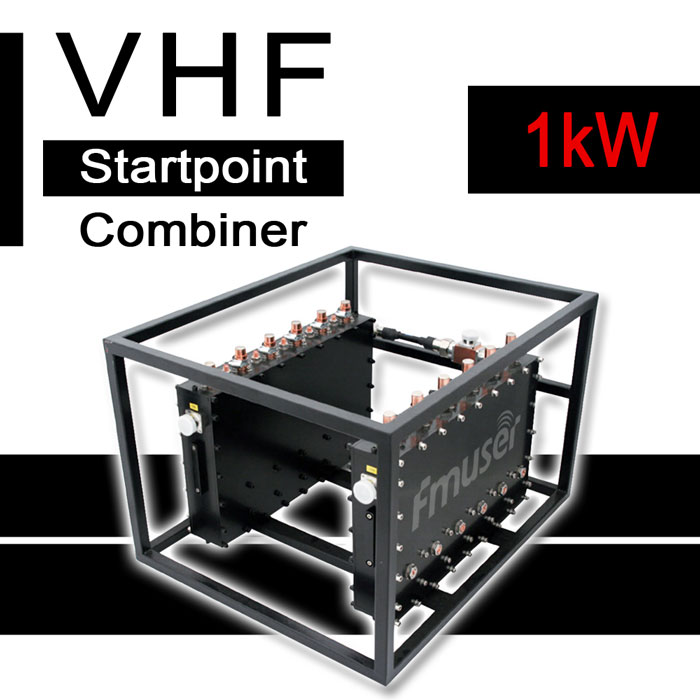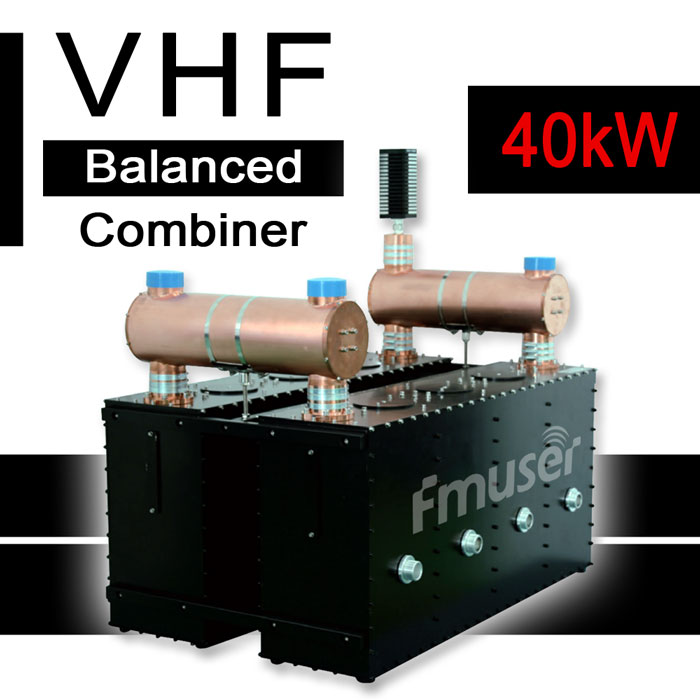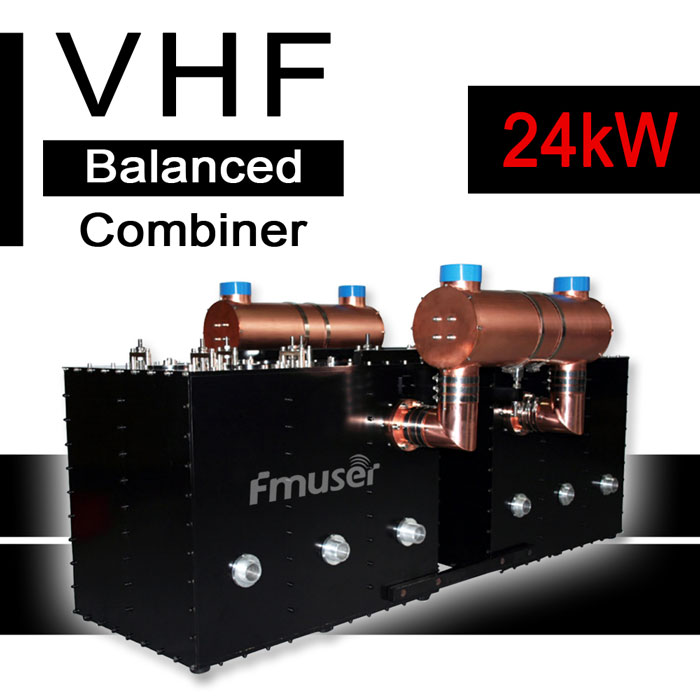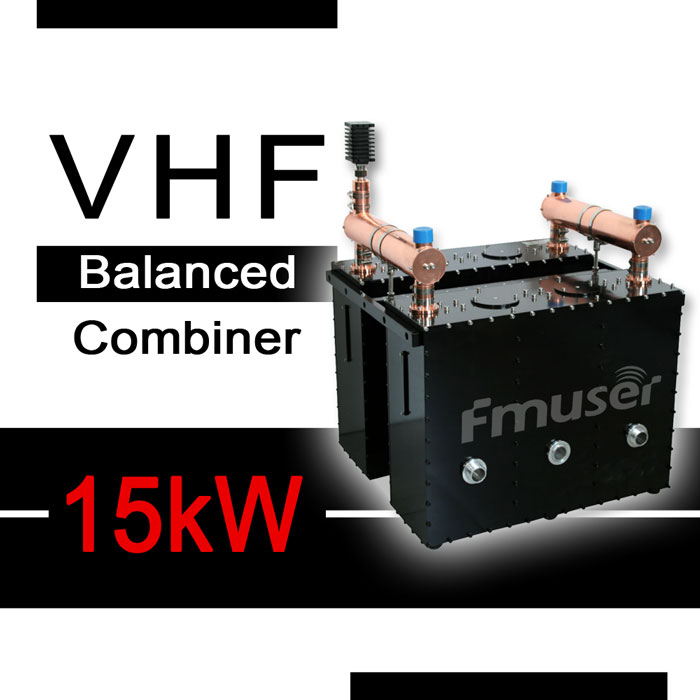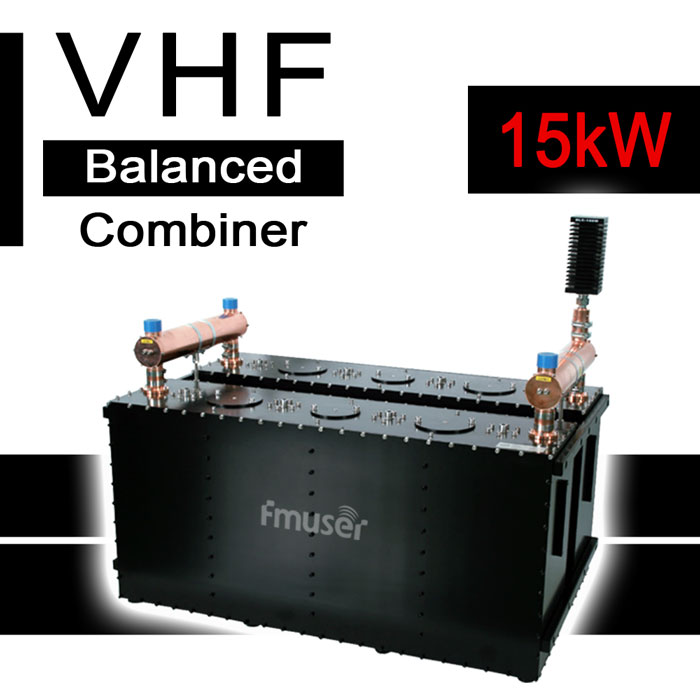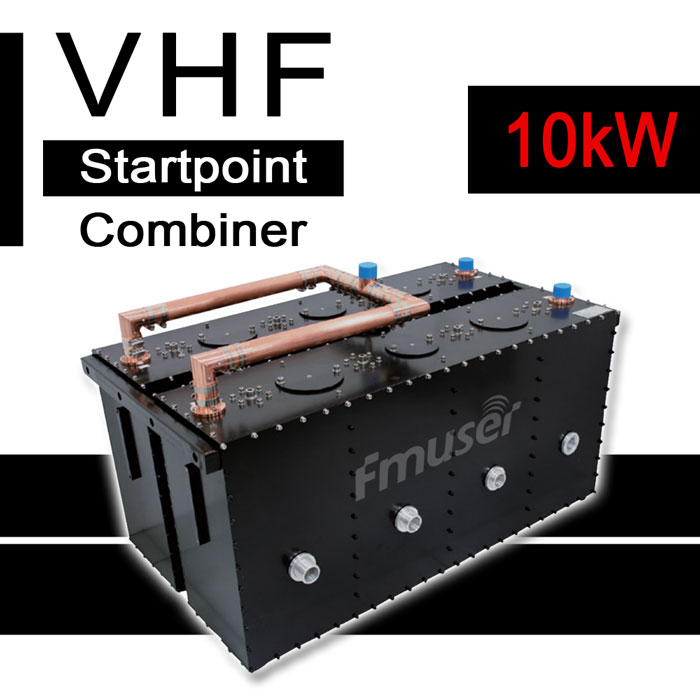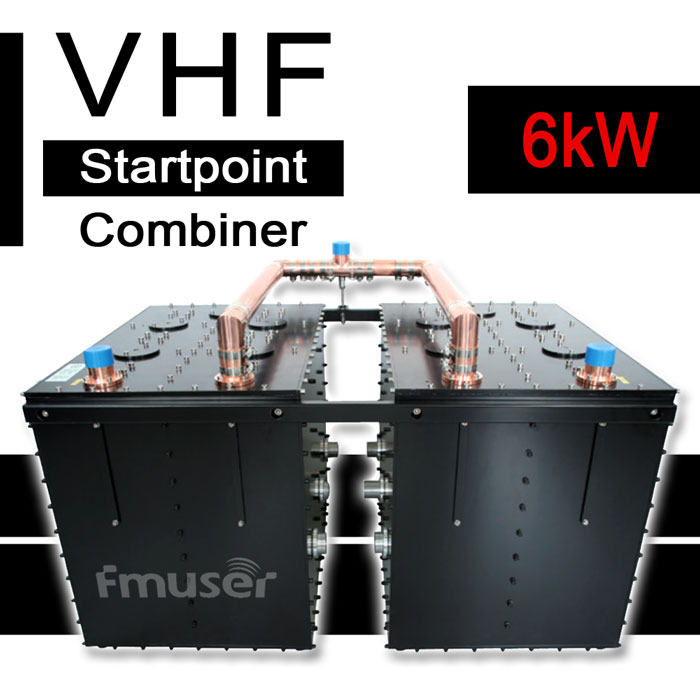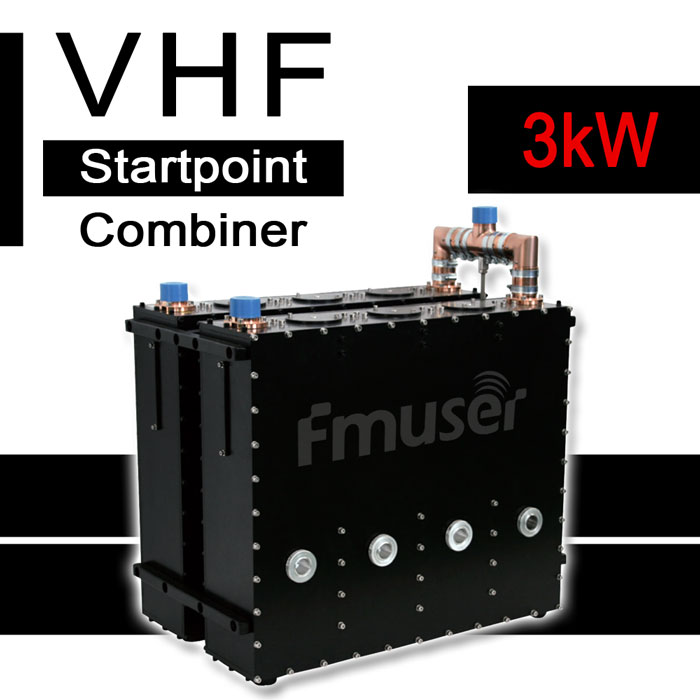
VHF Combiners
1. Unlocking Precision: Discover FMUSER’s VHF Cavity Combiner Solutions
FMUSER’s VHF Cavity Combiner stands as a cornerstone for seamless signal management in industries like broadcasting, telecommunications, and public safety. Specializing in cutting-edge RF solutions, FMUSER categorizes its products by power capacity, frequency range, and application-specific designs, ensuring system integrators and engineers pinpoint the ideal combiner for projects ranging from community radio stations to nationwide emergency networks. Simplify your search with FMUSER’s expertly curated options tailored to deliver reliability and scalability.
2. Engineered Excellence: Unmatched Performance for Every Project
FMUSER’s VHF Cavity Combiners are built to thrive under demanding conditions:
- Robust Durability: Heavy-duty alloy construction withstands harsh environments.
- Certified Efficiency: Compliance with FCC/CE standards ensures low insertion loss (<0.2dB) and high isolation (>25dB).
- Advanced Technology: Narrowband tuning and modular design enable precise frequency alignment (+/- 0.1MHz).
- Scalable Solutions: From 500W entry-level units to 10kW industrial-grade systems, FMUSER caters to hobbyists, broadcasters, and enterprises alike.
3. Powering Critical Connectivity: Applications of FMUSER’s VHF Combiner
1. Broadcast Radio Networks
- Application: Combining transmitter signals for multi-channel FM/AM broadcasting.
- FMUSER Advantage: Ultra-low distortion ensures crisp audio quality across vast coverage areas.
2. Emergency Communication Systems
- Application: Integrating public safety radios for police, fire, and EMS.
- FMUSER Advantage: Ruggedized combiner units guarantee reliability during crises.
3. TV Transmission Hubs
- Application: Merging UHF/VHF signals for digital TV broadcasting.
- FMUSER Advantage: High power handling minimizes downtime in 24/7 operations.
4. Military & Defense Networks
- Application: Securing tactical communication lines.
- FMUSER Advantage: Custom electromagnetic shielding for mission-critical durability.
4. Why FMUSER? Fast, Flexible, Future-Ready
- Factory-Direct Savings: Eliminate middlemen with competitive pricing.
- Always Ready: 95% products in stock, shipped globally in 3-5 days.
- Turnkey Support: Pre-configured systems, on-site installation, and lifetime technical aid.
- Tailored Solutions: OEM customization for unique frequency/power needs.
- Proven Expertise: Trusted by BBC affiliate broadcasters and NATO contractors.
5. Smart Selection Made Simple: Your Buying Checklist
- Technical Specs: Match power (1kW–10kW), frequency (30–300MHz), and VSWR (<1.5:1).
- Compatibility: Verify connectors (N-type, 7/16 DIN) and rack-mount dimensions.
- Budget Alignment: Balance upfront costs with FMUSER’s industry-leading 5-year warranty.
-
![167-223 MHz 4 or 6 Cav. 7/16 DIN 1kW Starpoint VHF Transmitter Combiner Compact 6 Cavity Duplexer TX RX Duplexer for TV Station]()
Price(USD):Ask for a quotation
Sold:3
-
![167-223 MHz 3 1/8" 3 or 4 Cav. 40kW Compact VHF TX RX Combiner Balanced VHF Cavity Duplexer 3 Way RF Combiner for TV Station]()
Price(USD):Ask for a quotation
Sold:3
-
![167-223 MHz 3 1/8" 24kW Compact VHF 6 Cavity Duplexer Digital Balanced VHF Transmitter Combiner TX RX Duplexer for TV Broadcast]()
Price(USD):Ask for a quotation
Sold:4
-
![167-223MHz 1 5/8" 3 or 4 Cavity 15kW VHF Transmitter Combiner Compact VHF Cavity Duplexer TX RX Balanced Duplexer for TV Station]()
Price(USD):Ask for a quotation
Sold:9
-
![167-223 MHz 1 5/8" 3 or 4 Cav. 15kW Balanced VHF Transmitter Combiner Compact Radio Combiner VHF Cavity Duplexer for TV Station]()
Price(USD):Ask for a quotation
Sold:4
-
![167-223 MHz 1 5/8" 4 Cav. VHF Starpoint 10kW Transmitter Combiner Compact Cavity Duplexer for VHF Combiner Multicoupler System]()
Price(USD):Ask for a quotation
Sold:9
-
![167-223 MHz 4 or 6 Cav. 1 5/8" 6kW TX RX Combiner Compact 2 Way RF Combiner Starpoint VHF Duplexer Repeater for TV Station]()
Price(USD):as
Sold:6
-
![167-223 MHz 1 5/8" 4/6 Cav. 3kW VHF Starpoint Transmitter Combiner Compact Filter Combiner TX RX Systems Duplexer for TV Station]()
Price(USD):Ask for a quotation
Sold:3
- What is a VHF combiner used for?
- VHF combiners are used to combine multiple transmitters and receivers into a single antenna system. This allows for increased operational efficiency and cost savings. The most common applications of VHF combiners include broadcasting, public safety and military communications, and amateur radio.
- How do you use a VHF combiner for broadcasting?
- 1. Ensure that all the VHF antennas connected to the combiner are properly tuned and in good condition.
2. Carefully adjust the gain settings of the combiner to match the output of the antennas.
3. Monitor the combiner output to ensure that the signals are properly combined and any interference is eliminated.
4. Avoid using the combiner in areas where there is potential for strong interference, such as close to a power line.
5. Make sure that any additional components are properly connected, such as amplifiers or filters.
6. Regularly check the connections and settings of the combiner to ensure optimal performance.
- How does a VHF combiner work?
- A VHF combiner is a device used in broadcast stations to combine multiple signals from different transmitters into a single output. It works by combining the signals from multiple transmitters into a single signal, which is then broadcasted from one common antenna. This helps reduce the number of antennas needed for broadcasting. It also helps reduce the amount of interference that can occur from multiple signals being broadcast from multiple antennas.
- How many types of VHF combiners are there and what are the differences between them?
- There are three main types of VHF combiners: passive, hybrid, and active. Passive VHF combiners are the simplest and least expensive option, but they can only be used when all signals are at the same power level. Hybrid VHF combiners can accommodate signals at different power levels, but they are more complicated and expensive than passive combiners. Active VHF combiners provide the highest level of performance, but they are the most complex and expensive option.
- How do you choose the best VHF combiner?
- When choosing the best VHF combiner for a broadcast station, it is important to consider a few key factors. Firstly, consider the size and configuration of the VHF combiner, to ensure it fits the available space and will handle the station’s power and frequency requirements. Secondly, consider the quality of the components and materials used in the product, to ensure it will stand up to the demands of the broadcast station. Last but not least, consider the price of the product, as well as any warranties or guarantees offered. It is also important to read customer reviews to get a better idea of how well the product will perform in operation.
- How do you correctly connect a VHF combiner into the broadcast system?
- 1. Begin by connecting the antenna to the input of the VHF combiner.
2. Connect the output of the combiner to the transmitter.
3. Connect the ground of the combiner to the ground of the transmitter.
4. Make sure all connections are secure and the combiner is powered up.
5. Verify the connections with a VSWR meter or other appropriate test equipment.
6. Adjust the input and output amplitudes of the combiner to desired levels.
7. Monitor the performance of the combiner and transmitter to ensure proper operation.
- What equipment is related to a VHF combiner?
- The equipment related to a VHF combiner in a broadcast station includes: combiner amplifiers, filter assemblies, transmission lines, antenna couplers, directional couplers, and power dividers.
- What are the most important physical and RF specifications of a VHF combiner?
- The most important physical and RF specifications for a VHF combiner include:
- Frequency Range: The VHF combiner should be capable of operating across the VHF frequency range (30 MHz – 300 MHz).
- Insertion Loss: The insertion loss should be low, typically less than 0.5 dB.
- Return Loss: The return loss should be high, typically greater than 10 dB.
- Isolation: The isolation between ports should be high, typically greater than 30 dB.
- VSWR: The VSWR should be low, typically less than 1.5:1.
- Impedance: The impedance should be 50 Ohms.
- Power Handling: The power handling should be sufficient for the application.
- How do you correctly maintain a VHF combiner as an engineer?
- As an engineer, it is important to perform daily maintenance of a VHF combiner in a broadcast station to ensure optimal performance. This includes regularly inspecting the combiner for any signs of damage, ensuring all connections are properly secured, checking all grounding components, and cleaning the combiner with an approved cleaning solution. Additionally, it is important to perform regular gain and loss tests to ensure the combiner is working properly and to check the intermodulation level. Finally, it is important to check the power levels and make any necessary adjustments.
- How do you repair a VHF combiner if it is not working?
- To repair a VHF combiner, you will need to identify the broken parts and then replace them with new, compatible parts. First, make sure that the power is off and then use a multimeter to check the voltage of each component. If it is lower than the recommended voltage, then it will need to be replaced. Next, use a soldering iron to remove any broken or damaged parts. Then, replace the broken parts with new ones. Once the new parts are in place, solder them together and use a multimeter to check that the voltage is correct. Finally, reassemble the combiner and test it to ensure it is working properly. If it fails to work, you may need to replace additional parts.
- How do you choose the right packaging for a VHF combiner?
- When choosing packaging for a VHF combiner, make sure that you select materials that are strong and durable enough to protect the combiner from any external damage. Additionally, make sure to pack the combiner in a way that prevents any shock or vibration during transportation. It is also important to ensure that the packaging is properly sealed to prevent moisture from entering. Lastly, make sure to label the packaging to ensure that the combiner is not exposed to any extreme temperatures during transit.
- What material is used for the casing of a VHF combiner?
- The casing of the VHF combiner is commonly made of metal, such as steel or aluminum. These materials will not affect the performance of the combiner, as long as the combiner is properly sealed to prevent any moisture or dust from entering.
- What is the basic structure of a VHF combiner?
- The basic structure of a VHF combiner typically consists of a duplexer, isolator, and filter. The duplexer allows two signals to be combined or split and serves as the input/output port for the combiner. The isolator prevents feedback and isolates each signal from the other, while the filter helps to reject any unwanted signals. The performance and attributes of the combiner are largely determined by the quality of the components used in its construction. Without any of these structures, the combiner will not be able to function normally.
- Who should be assigned to operate a VHF combiner?
- The person assigned to manage the VHF combiner should be someone who is experienced and knowledgeable about broadcasting, radio frequencies, and transmitters. This person should also have excellent problem-solving skills and knowledge of antenna systems, as well as the ability to troubleshoot and diagnose any technical issues that may arise.
- How are you?
- I am fine
CONTACT US


FMUSER INTERNATIONAL GROUP LIMITED.
We are always providing our customers with reliable products and considerate services.
If you would like to keep touch with us directly, please go to contact us
